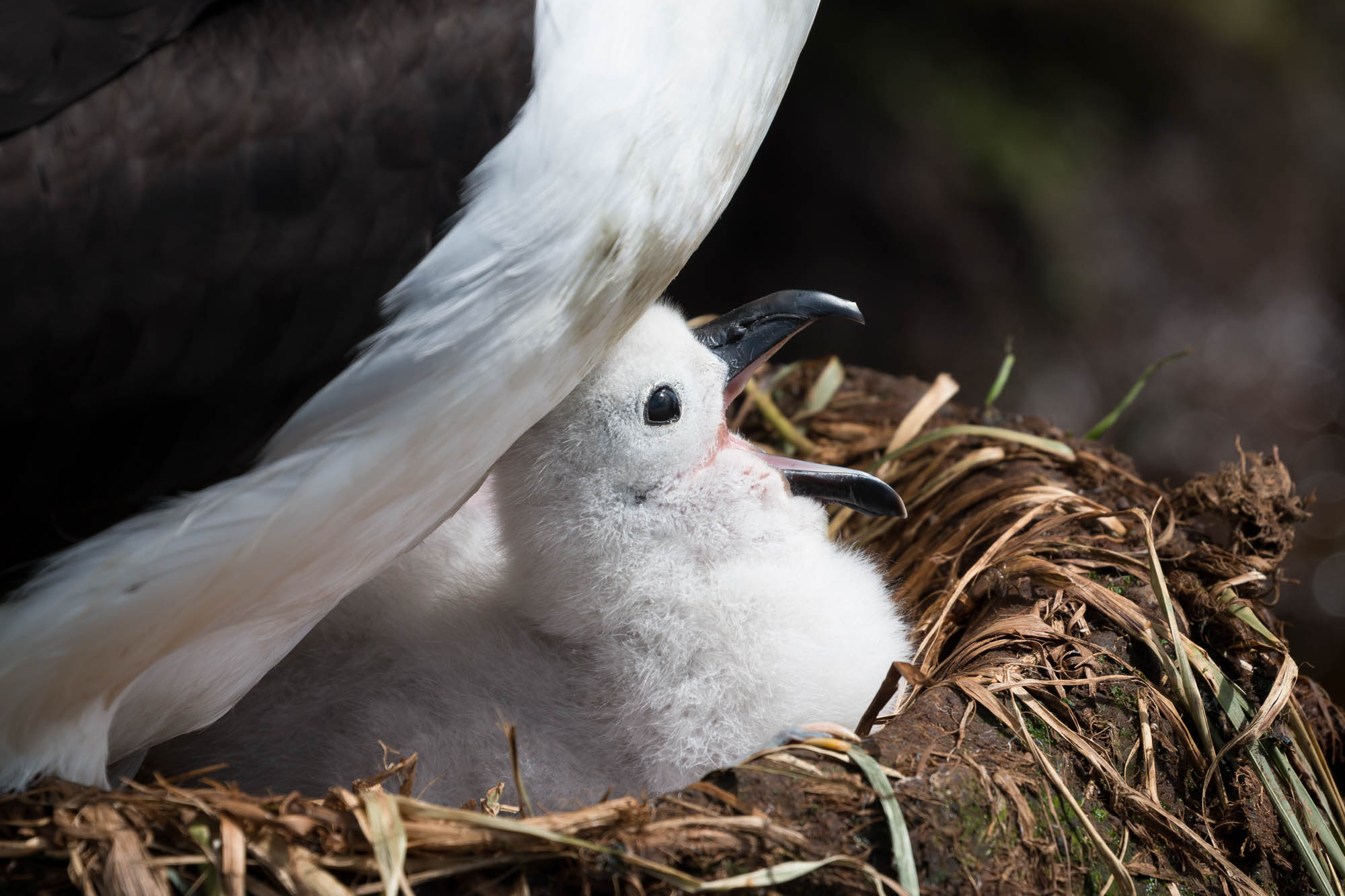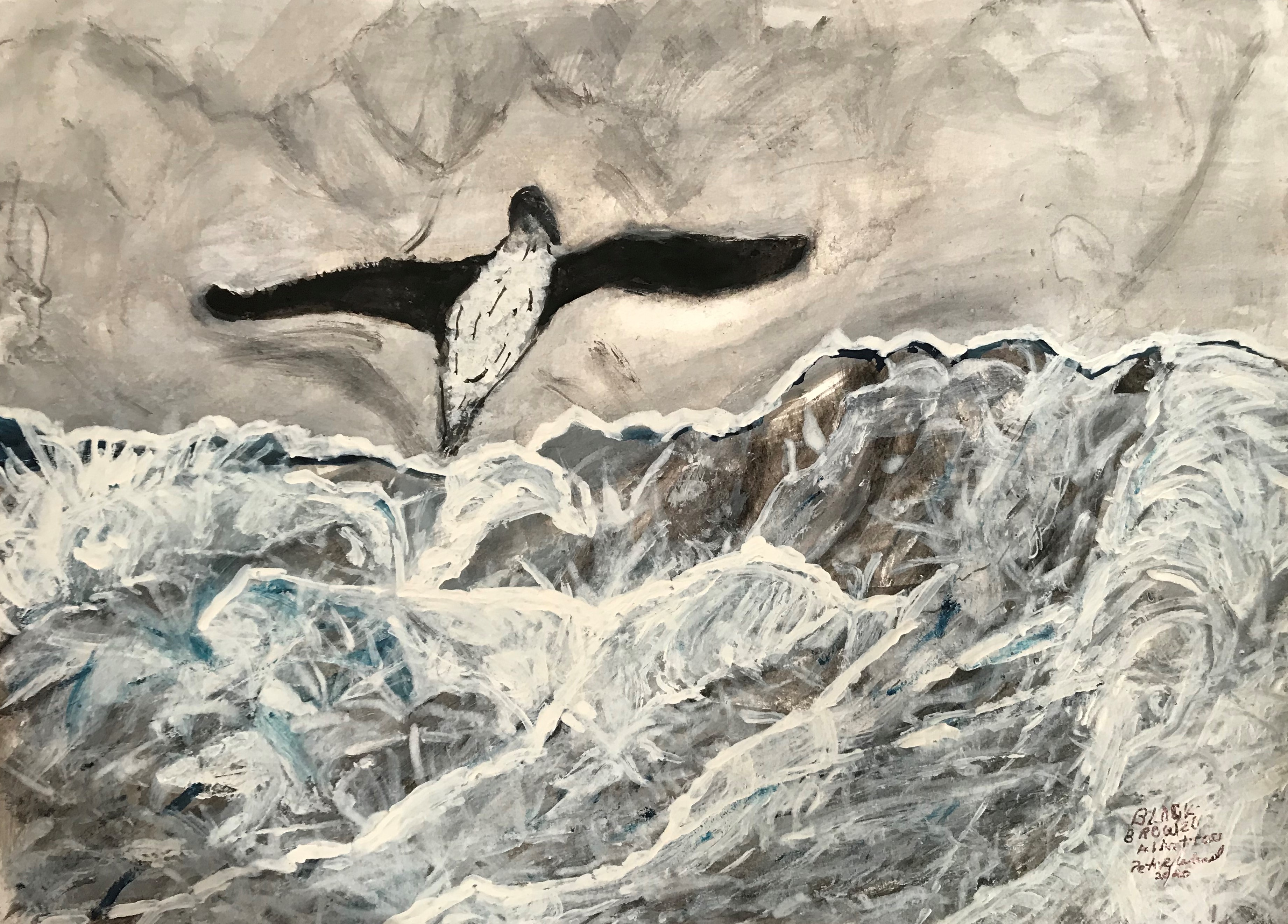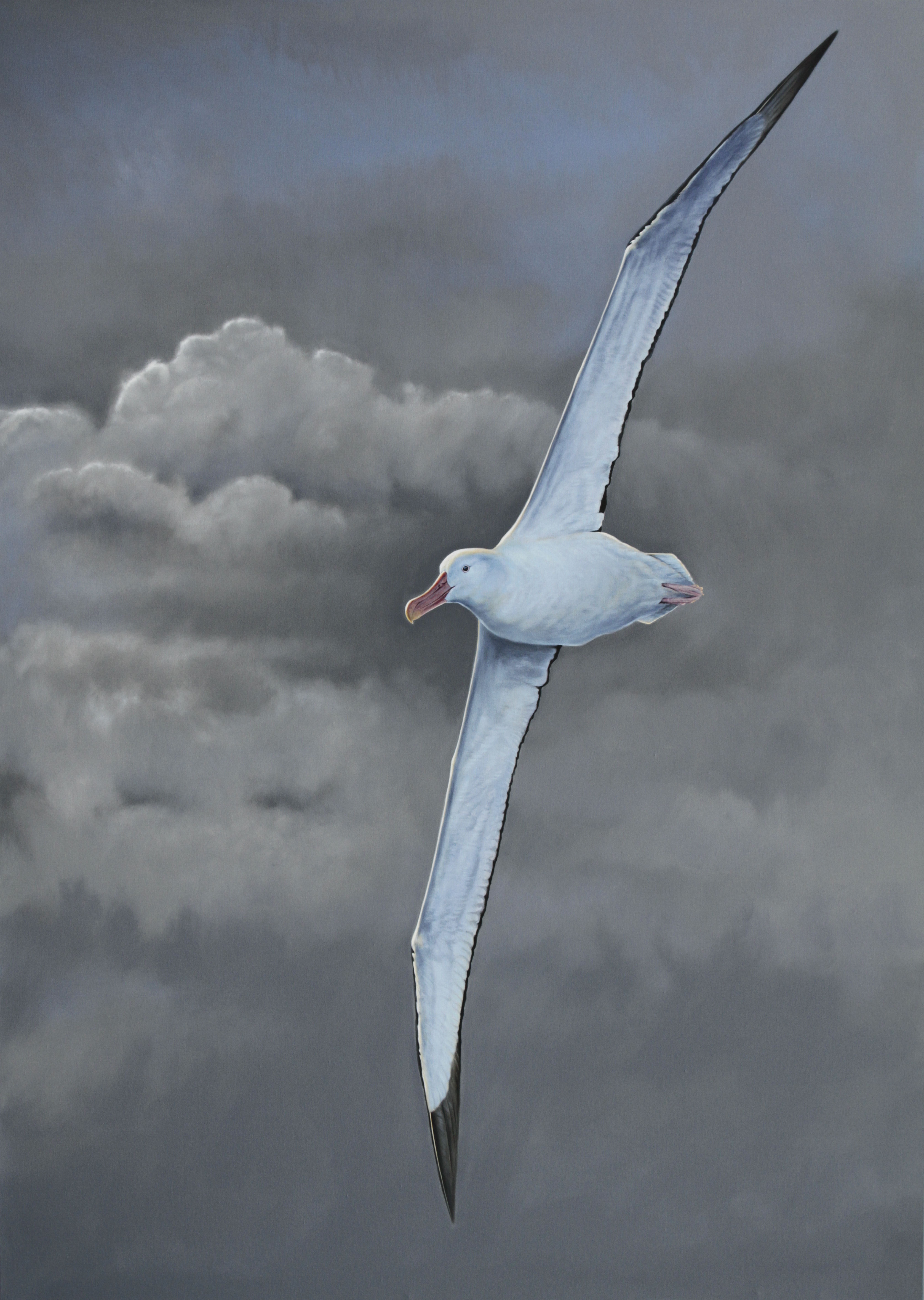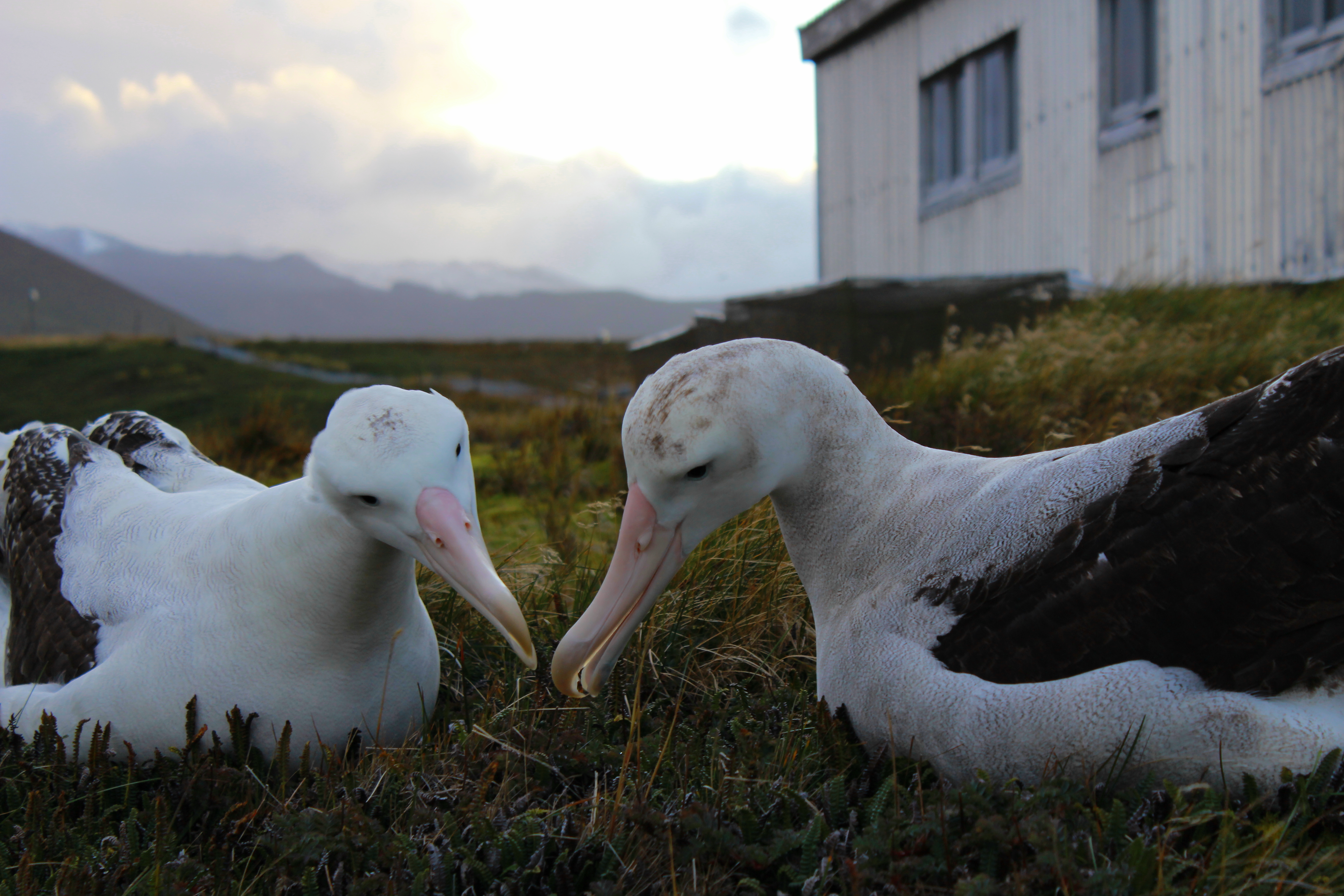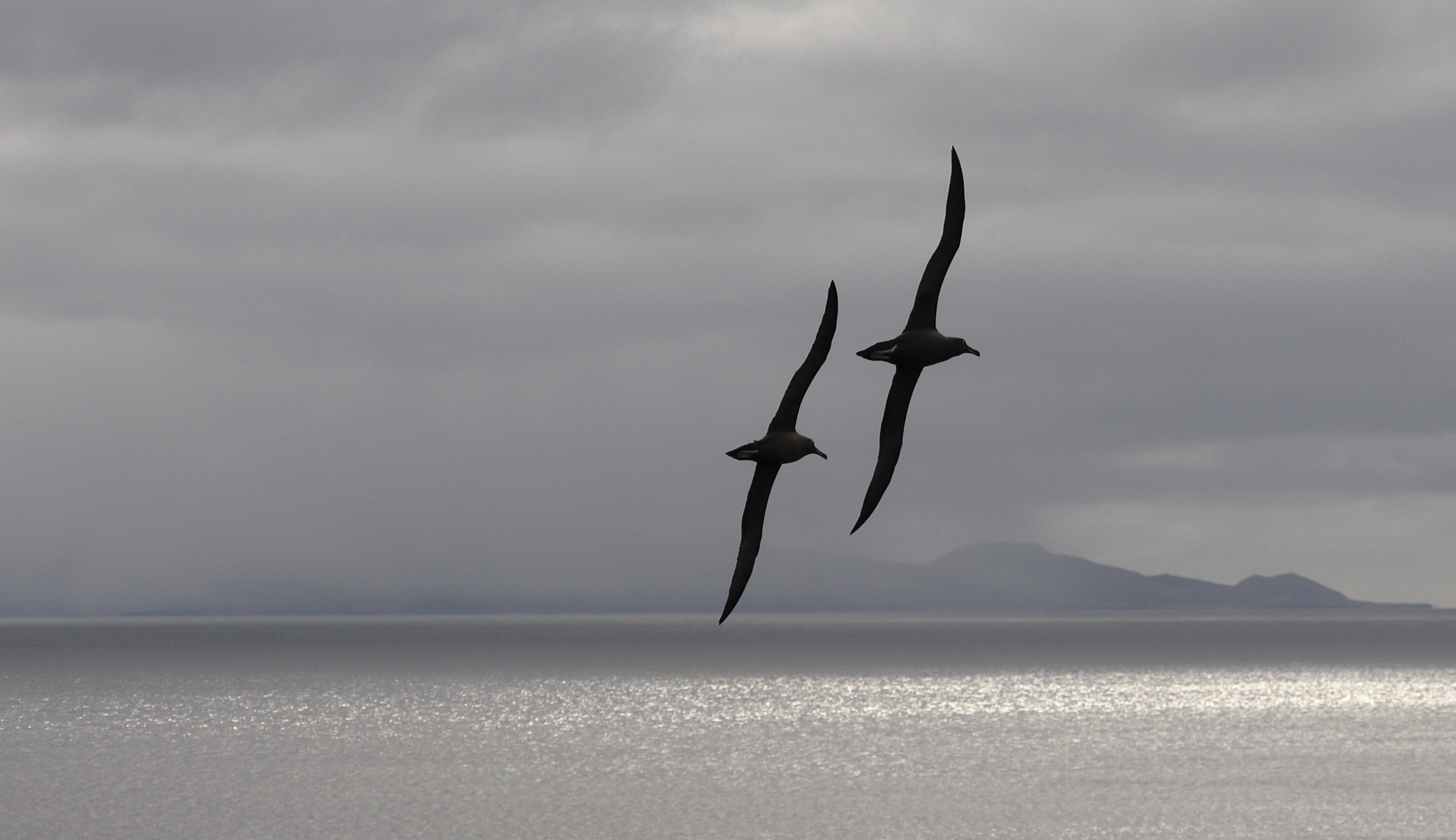
Sooty Albatrosses fly in unison off Marion Island, with Prince Edward Island on the horizon; photograph by Stefan Schoombie
Stefan Schoombie (FitzPatrick Institute of African Ornithology, University of Cape Town, Rondebosch, South Africa) and colleagues have published in the journal Polar Biology on aspects of the at-sea occurrence of globally Endangered Sooty Albatrosses Phoebetria fusca breeding on Marion Island in the southern Indian Ocean..
The paper’s abstract follows:
“Sooty Albatrosses (Phoebetria fusca; Endangered) are biennially breeding birds with successful breeders typically spending at least 15 months at-sea (‘sabbatical’) before returning to their breeding grounds on sub-Antarctic islands. Stable isotope analysis of feathers suggests that non-breeding adult Sooty Albatrosses moult in sub-tropical waters, north of the Sub-Tropical Front (STF). The Prince Edward Islands (Marion and Prince Edward) provide nesting grounds for ca 24% of the world’s Sooty Albatrosses. We tracked 20 adult Sooty Albatrosses from Marion Island with geolocators (GLS loggers) and satellite transmitters (PTT) during their non-breeding sabbaticals between 2008 and 2014. Stable isotope analysis also was performed on feathers collected from GLS-tracked birds upon device retrieval. Adult birds mostly remained within international waters in the southern Indian Ocean during their sabbatical period, splitting their time between sub-tropical and sub-Antarctic waters. Sooty Albatrosses were more active during the day on average but spent similar time in flight during full moon periods. Periods of reduced flight activity, measured by time on water, suggest that moulting occurs mainly around the STF. Breeding success influenced moult phenology, with unsuccessful birds moulting in late summer, immediately following a failed breeding attempt (Feb–Mar), whilst successful breeders moulted early the following summer (Oct–Dec). Failed breeders spent more time flying between breeding attempts than successful breeders, particularly whilst moulting. Our study identifies key areas utilised by non-breeding Sooty Albatrosses, which is critical to implement appropriate management strategies that may help population recovery of this endangered species.”
With thanks to Stefan Schoombie.
Reference:
Schoombie, S., Connan, M., Dilley, B.J., Davies, D., Makhado, A.B. & Ryan, P.G.. 2021. Non-breeding distribution, activity patterns and moulting areas of Sooty Albatrosses (Phoebetria fusca) inferred from geolocators, satellite trackers and biochemical markers. Polar Biology doi.org/10.1007/s00300-021-02969-3.
John Cooper, ACAP information Officer, 02 December 2021

 English
English  Français
Français  Español
Español 